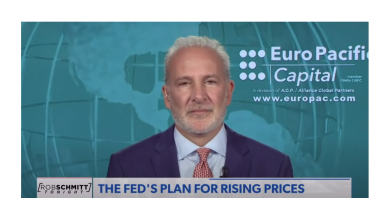Social Security Increase for Inflation Could Lead to More Inflation

Social Security recipients will be getting a big raise in 2023. That’s good news if you’re receiving benefits from the program, but not so great if you’re hoping inflation will abate any time soon.
The Social Security Administration recently announced an 8.7% cost of living adjustment (COLA) for next year. That goes on top of a substantial 5.9% COLA for 2022. The 2023 increase is the largest in 40 years.
The COLA will translate to an additional $140 per month for the average Social Security recipient.
The last time Social Security recipients got a bigger raise was in 1981 when the COLA was 11.2%.
The increase will add about $100 billion of spending per year. The Social Security Board of Trustees said the trust fund can pay full benefits through 2035. After that, the board projects the program will be able to pay 80% of benefits.
A spokesperson for the Committee for a Responsible Federal Budget told CNBC the COLA could accelerate the depletion of the trust funds by at least one calendar year.
The big COLA is in direct response to the ongoing inflation problem. The 8.2% annual increase in September is just one in a long line of big CPI prints over the last year. Unfortunately, the COLA increase won’t cover all of the rising costs seniors face.
The Social Security Administration calculates the COLA based on a formula that uses the “Consumer Price Index for All Urban Wage Earners and Clerical Workers” (CPI-W). Like most government numbers, it doesn’t actually reflect the actual cost of living for most retirees. According to calculations done in 2020, Social Security benefits had lost 33% of their buying power since 2000. And that was in the era of “low” inflation.
This underscores a couple of key points.
1. You can’t count on Social Security to actually secure you a comfortable retirement.
2. You need to plan to protect your wealth from the persistent, insidious erosion of inflation.
More bad news – the COLA increase could actually add to the inflationary spiral.
Peter Schiff talked about it during a recent podcast, pointing out that the people who receive this additional $100 billion will go out and spend it. In other words, the government will be handing out more money so people can cope with higher prices. But that will inevitably push prices higher.
People are supposed to cut back when prices go up. But if the government gives everybody more money to pay the higher prices. You’re just fueling the inflation, and it’s like a dog chasing its tail. You’re never going to catch it, which is why the government is never going to bring inflation down.”
In effect, the extra money will prop up demand, and possibly even increase it. Higher demand without corresponding higher supply inevitably means higher prices. That will likely be reflected in future CPI data.
Social Security faces another problem. With the labor force participation rate falling, there are fewer people paying into the system. As Peter pointed out, the system depends on younger people working and paying into the system in order to keep the Ponzi scheme going.
The problem is those young people aren’t there working. And in fact, older people are retiring earlier, and so we have this smaller labor force participation rate. So, the gap between what the government collects in Social Security taxes and what it’s spending in benefits is rising.”
No matter how you slice it, it’s clear the Social Security system isn’t solvent over the long term.
Call 1-888-GOLD-160 and speak with a Precious Metals Specialist today!
Buka akaun dagangan patuh syariah anda di Weltrade.
Source link







